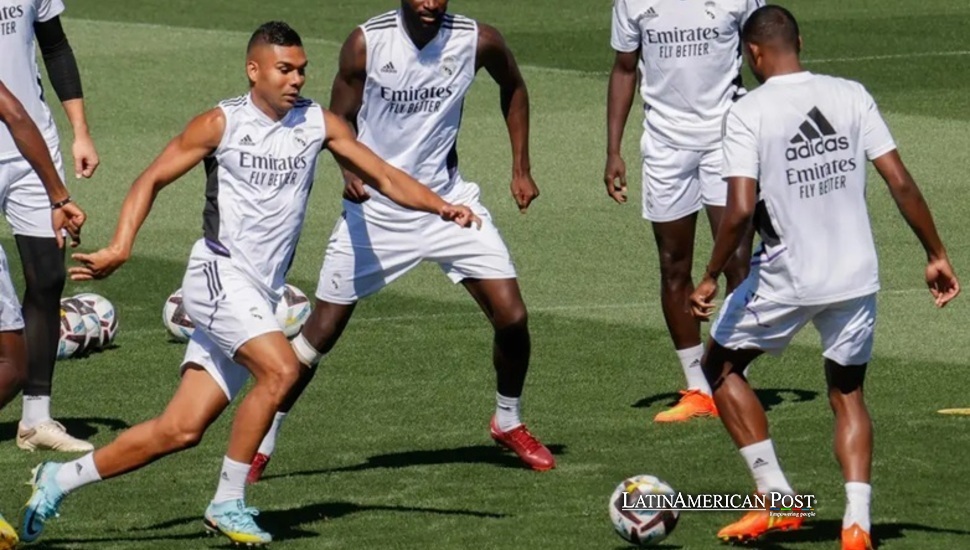Top 2025 Highest-Paid South American Footballers Worldwide

From record-breaking transfers to staggering weekly wages, the South American football elite continues to dominate the global stage. Despite surprising positions for certain superstars, the continent’s presence among the world’s top earners underscores its enduring impact on the beautiful game.
A Continent of Endless Talent
South America has long been hailed as the spiritual home of football, nurturing countless icons who dazzle in some of the biggest stadiums worldwide. Children on every street corner grow up honing their craft on rough patches of earth and battered concrete pitches. While for many youngsters, the sport gives them a chance at a better life, it also shows their talent and joy. These qualities, grown in tournaments, from youth leagues to continental competitions, have made South America the main source of talent for world football.
This system produced stars for top clubs. It built a market where top players earn huge salaries. Modern football’s economy values on-field skill, resulting in wages plus unimaginable transfer fees ten years ago. This is especially true for South American exports who combine technical mastery and sheer passion with an all-action style. Today, the best among them have soared into rarefied financial territory, pocketing weekly wages that keep them among the sport’s most privileged earners. The year 2025 shows a clear ranking of these top-paid South American footballers, where old legends join rising stars to create a vivid picture of the continent’s influence on the modern game.
Surprising Spots and Newcomers
Football fans worldwide might be astonished to discover that Lionel Messi, considered by many as the greatest ever to play, is now merely 16th among South American top earners. His move to Inter Miami brought him outside the upper echelons of club football’s pay scale, even though he remains an iconic figure who once sat at (or near) the very pinnacle of such lists. In a clear contrast, players such as Casemiro and Vinicius Junior moved to much higher wage brackets, showing quick changes in contract structures with a growing presence of younger stars.
For many, this shows significant changes in the football world. Casemiro – who once stayed key in Real Madrid’s midfield – now earns £350,000 per week at Manchester United, making him the highest earner in 2025. Vinicius Junior, the energetic Real Madrid winger who impressed fans with his speed and style, now earns almost £334k per week, showing that age does not stop young players from reaching the earnings of seasoned veterans. Having narrowly missed out on bringing Brazil its first Ballon d’Or since 2007, the 24-year-old’s financial package reflects his current status and the tremendous potential he still has yet to unveil.
Yet, not all high-profile names in the top 20 rest on firm ground. Some, like Eder Militao, bear the weight of a lucrative contract that becomes an expensive entry on the wage bill when long-term injuries strike. While clubs do anticipate risk—especially in positions like center-back—Real Madrid’s repeated reliance on Militao has run into the harsh reality of back-to-back ACL injuries, forcing the 27-year-old to watch from the sidelines. The same might be said of Arsenal’s Gabriel Jesus, who arrived in north London as a promising forward solution but has struggled with persistent injury problems, raising questions about whether his £265,000-per-week salary is fully justified.
Big Earners, Mixed Outcomes
The top 10 list of highest-paid South American footballers reveals intriguing stories of success, frustration, and sometimes unfulfilled promises. In 10th place, Eder Militao’s injuries have robbed him of playing time, but he remains among the best defenders in the world when fit. Just ahead at 9th, Gabriel Jesus’s health woes have forced Arsenal to search for alternative attacking options, leaving fans wondering if his big weekly pay might be spent more effectively elsewhere.
Meanwhile, Lautaro Martinez exemplifies a star who justifies every penny. The Inter Milan forward has earned his place among the highest-paid players, commanding more than £266k a week while delivering consistent goals and leadership in the Nerazzurri’s push to reclaim domestic and continental honors. A World Cup and Copa América winner, Martinez remains indispensable, forging potent attacking links with teammates. At only 27 years old, his prime years may bring more silverware and potentially an even more significant salary bump.
Then there is Federico Valverde, another Real Madrid mainstay whose game has soared to new heights in the Spanish capital. Signed to an extended deal until 2029, the Uruguayan’s adaptability in midfield makes him indispensable. Earning around £267k weekly, Valverde repays that investment by covering nearly every blade of grass on the pitch, showcasing versatility that allows him to orchestrate attacks or slip back to shield his defenders, depending on the team’s needs.
High-profile defenders like Marquinhos stand out similarly. In an era when forwards often command the most eye-watering pay, Paris Saint-Germain’s longtime center-back proves that consistently locking down the back line can be just as financially rewarding. Earning about £269k a week, Marquinhos has become the face of a PSG rearguard who has seen multiple high-profile arrivals and departures over the past decade. His long career and strong leadership made him a well-known figure in the French capital, where loyalty meets a big paycheck.
The Saudi Pro League plays a major part in shaping this year’s top earners. Players like Malcom and Roberto Firmino have joined many footballers who seek chances outside Europe’s leading teams, often earning very competitive salaries in the Middle East. Malcom’s previous excitement ended after a modest time at FC Barcelona, but his move to Al-Hilal restarted his career with financial gain, earning around £288k per week. Roberto Firmino, once a little-known player at Hoffenheim, became an important part of Liverpool’s trophy-winning teams. Though he worked in the shadow of top scorers like Mohamed Salah, his creativity and effort earned him recognition. His current role at Al-Ahli pays over £300k weekly, which shows the worth given to his technical skill and flexibility.
It is also notable that Jhon Duran received a very high pay raise when he left the Premier League’s Aston Villa bench for a significant salary in Saudi Arabia. He showed promise as a substitute but had limited chances in England because of established strikers, which led him to a big offer. Now at Al-Nassr, Duran earns £326,880 weekly, which illustrates the widening gap between the resources of some Middle Eastern clubs and those in Europe.
The Pinnacle of South American Wages
Two individuals, in particular, illustrate the power shifts within South American football’s financial hierarchy. Vinicius Junior stands on the cusp of claiming the top spot should he renegotiate his terms or spark a bidding war shortly. At just 24, the Brazilian forward’s energy, skill, and flair define Real Madrid’s attacking blueprint in a post-Cristiano Ronaldo era, significantly as Luka Modric and Toni Kroos move toward the twilight of their careers. Already commanding nearly £334k weekly, Vinicius Junior’s path upward seems inevitable if his trajectory continues.
For now, Casemiro is the highest-paid South American footballer worldwide. His weekly wage of £350,000 shows a long career with several Champions League wins at Real Madrid before he joined Manchester United for £70 million. Early at Old Trafford, the Brazilian defensive midfielder displayed hints of persistence along with the skill that once made him essential in Real’s midfield three. He also helped United win its first trophy in six years. However, form and fitness have taken a dip, and the man who once orchestrated defensive duties so seamlessly can now look out of sorts in the Premier League’s frenetic pace.
While concerns increase about his future and manager Ruben Amorim’s long-term plans, we do not know if Casemiro will continue as Manchester United’s main figure or try new opportunities. His top salary confirms him as one of the modern era’s most important midfielders. Whether he justifies that immense pay at Old Trafford—or eventually does so elsewhere—lingers as one of the unfolding storylines of 2025.
These financial rankings highlight how intensely the global football economy values South American talent. From center-backs forging ironclad back lines to strikers and wingers who thrill audiences, these players transcend mere star status. Their high earnings show raw skill developed in varied South American settings, while modern clubs constantly need global icons who inspire fans and win trophies.
Also Read: Chilean Tennis Federation Fury Over Cristian Garin Davis Cup Chaos
For every name like Lionel Messi—who once stood unchallenged at the top—there arises a new wave of superstars such as Vinicius Junior and Lautaro Martinez, poised to carry the region’s flag while commanding salaries that echo their brilliance. Some might question whether a game birthed in the streets and beaches of South America can retain its spirit under such a lucrative spotlight. Yet the continent’s distinct style and passion persist, ensuring these players are marks of creativity and flair that keep fans captivated, no matter where they play. If the current trend holds, South America’s output will keep sending Europe and the Middle East along with a steady flow of wonder kids, each landing more profitable contracts than the previous. Whether these continuously increasing wages will restrict the sport or merely highlight the vast value these players provide. In a period when the financial stakes in football peak, one fact stays the same: South Americans repeatedly stand set to spark the worldwide scene.
***All salaries referenced in this article are courtesy of publicly available data, including figures from Transfermarkt and Capology, accurate as of February 15, 2025.





